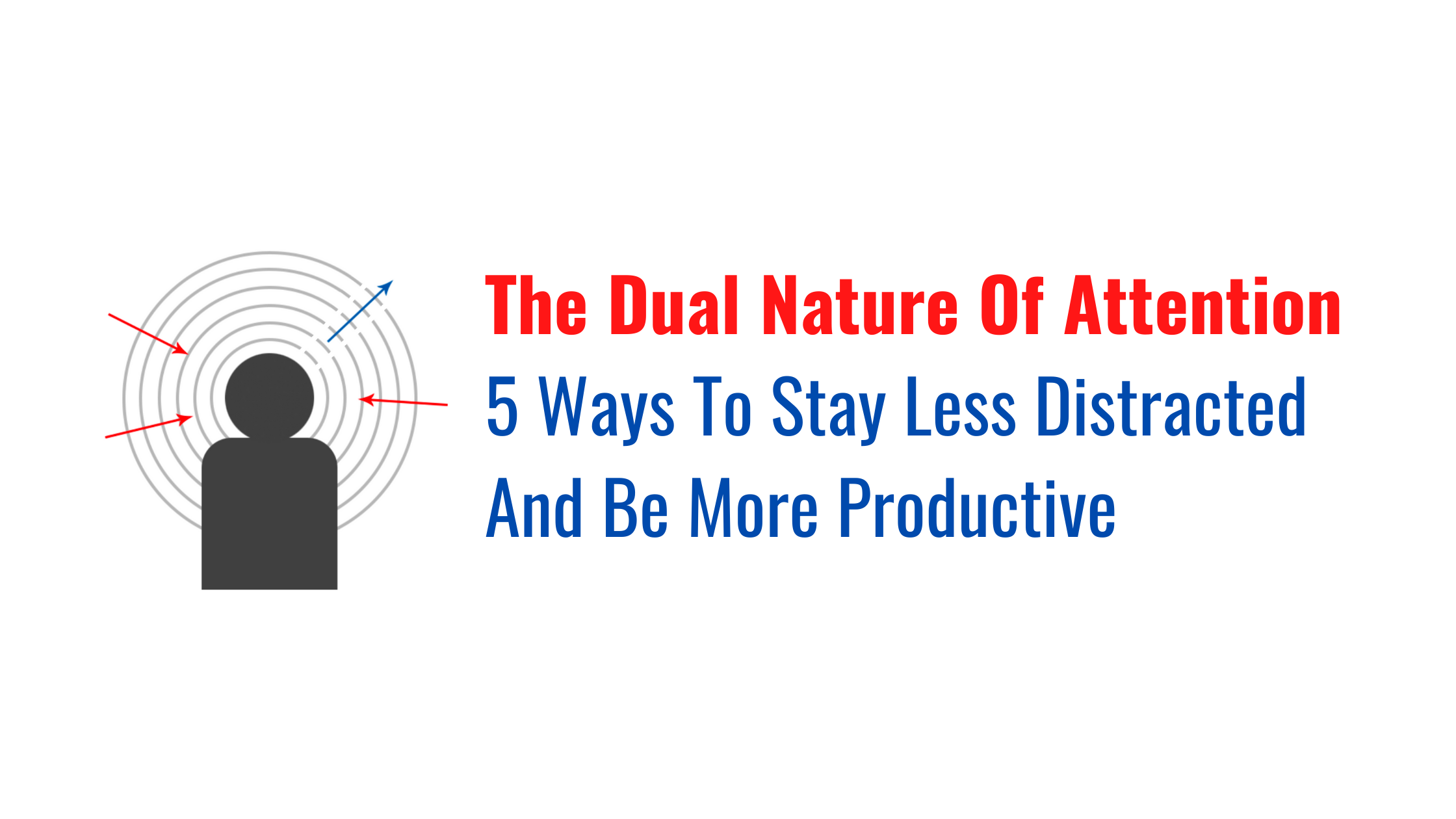
Attention. It helps you achieve all your goals as well as assists you when you procrastinate. If you know how to focus on the task at hand, you are more likely to achieve your goal, but sometimes you just can’t keep the focus and distract. In this article, you will find out how attention works and what causes it to alter.
But before going into the details, let’s talk about what attention is.
A Small Window Into The Vast World
Attention is the process that selects which sensory information is preferentially processed and ultimately reaches our awareness.1
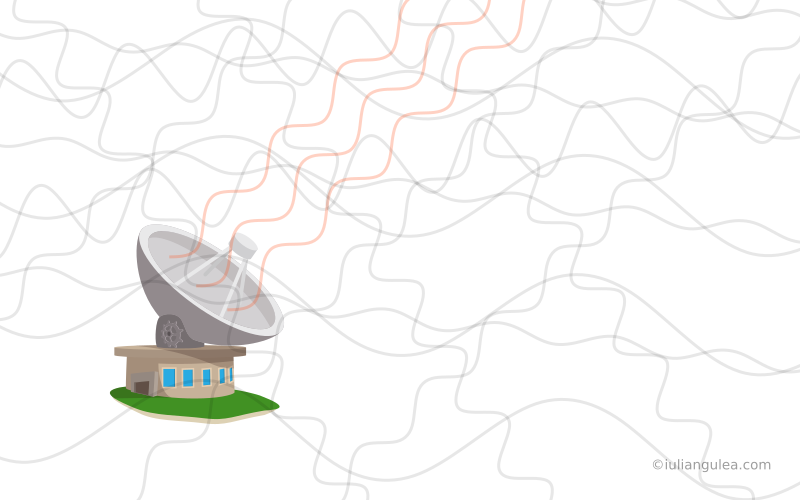
Consider the satellite dish. The signal from every satellite TV channel propagates through the air at every moment. And the satellite dish receives every frequency, but it amplifies only the channel we set it to. Millions of hours of airtime beam through space each moment, but we only see and hear what the satellite dish is tuned to, what it is focused on.2
So it is with our brains and attention. We are bombarded with sensory information at any given moment: lights, sounds, sights, smells, balance, and more, but we direct our attention only to certain stimuli: the screen we see in front of us or a song we are listening to. Our attention works like a filter - we focus on what we like and filter out what we don’t seek. Like a satellite dish, the brain receives a flood of signal, but it promotes to our awareness only what we are interested in.
Orienting Attention From Within And Without
We can orient our attention toward what we want or need as we decide. We are in charge of our attention. We are masters of it… Until we are not.
Studies have shown, and, from your experience, you can easily recall numerous cases when you are focusing on something but get distracted by noises, sights, people, and other unrelated things. Therefore, even though we are in charge of our attention, there is a lot more happening in the background.
In 2002, Maurizio Corbetta and Gordon L. Shulman published a paper3 in which they addressed the evidence of the two types of attention: the one that can be deployed under voluntary control and the other that can be captured by unexpected or salient events.
Goal-Directed Attention (Top-Down)
Goal-Directed attention (GDA) is the cognitive effort we make when we are curious about something or when we focus on something that is aligned with our goals. And by “goals” here, I don’t mean some grandiose, life-defining objectives. If I ask you to look at the blue circle in the image below, focusing your attention on it is also a goal you are pursuing.
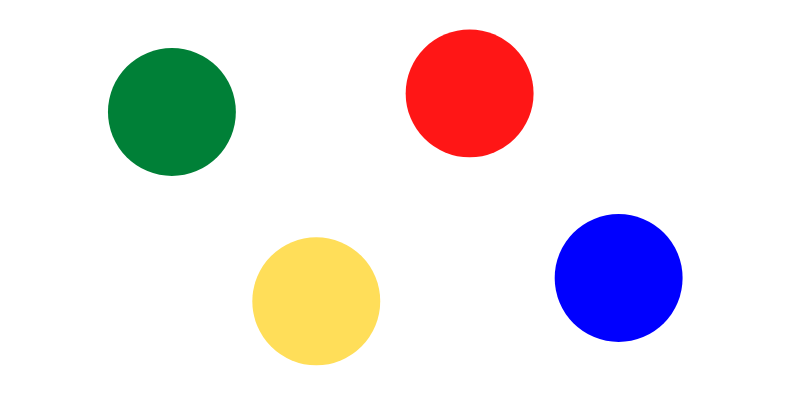
Another example is that you read these words now by deliberate focus and process the meaning of the text you see. Or whenever you speak with someone, you focus on the words they say and the meaning they try to communicate.
One essential characteristic of Goal-Directed attention is the fact that it is very narrow.
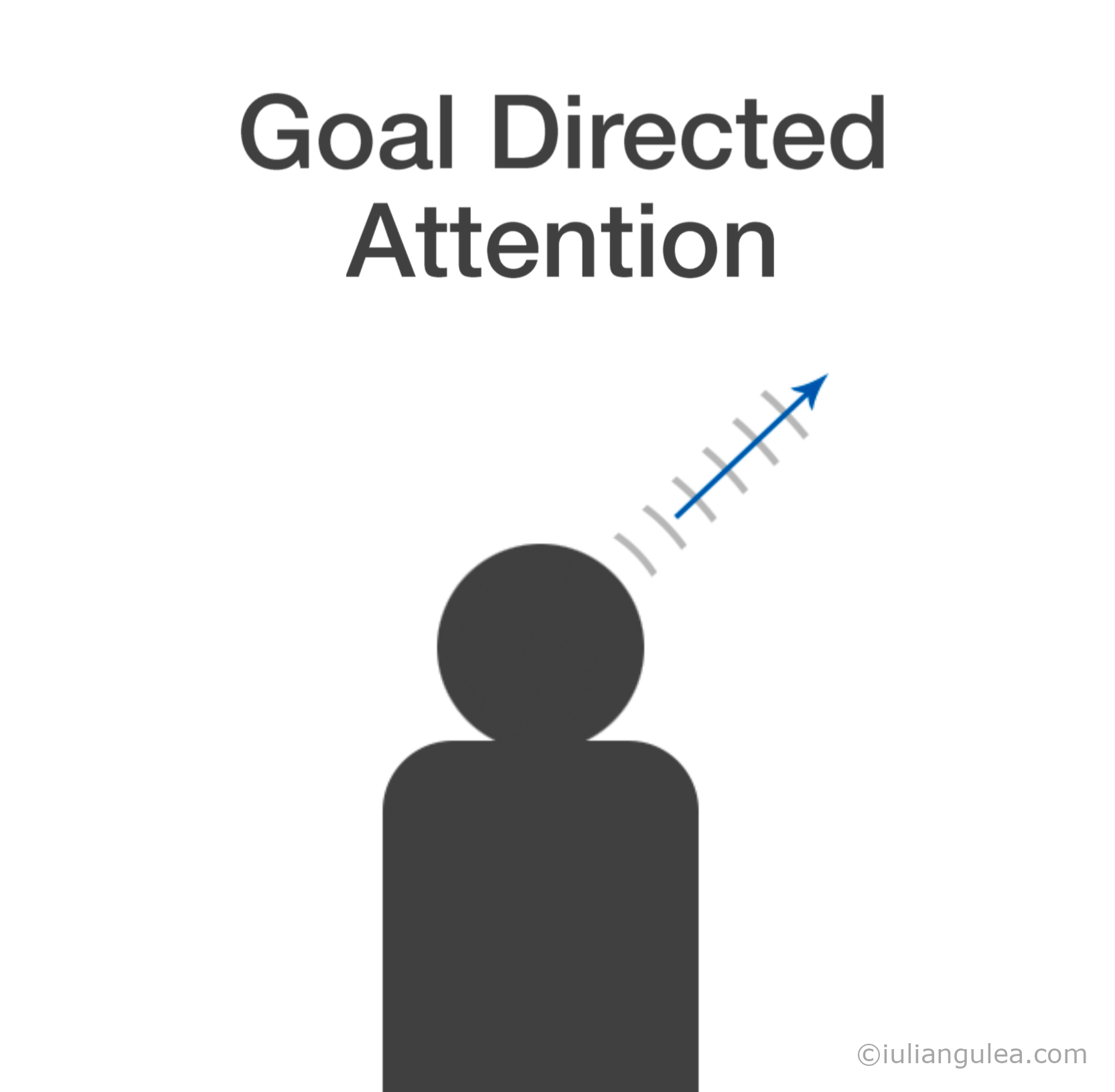
Since we purposefully direct the Goal-Directed attention on incoming sensory information or internal thoughts, we need to process that information to know how it aligns with our goal. But the conscious processing capabilities of our brains are scarce. Our Working Memory, which is believed to be where we operate and manipulate with data, has an estimated capacity of four chunks of information.
Moreover, we cannot consciously focus on more than one thing at a time, which further thins down the already narrow focus we are able to exercise.
In 1959, Neville Moray published a paper4 that described the phenomenon later coined as ** “The Cocktail Party Problem."** Experiment attendants were presented with two auditory information streams — one in each ear, and they were asked to attend to information presented in either one or the other ear.
The results showed that the verbal content in the unattended ear is blocked below the level of conscious perception, meaning that almost none of the verbal content of the rejected message is consciously processed.
Visual attention is also narrow. Even if the visual sense has the highest information throughput, we can process only about 10,000 bits/sec out of the 10,000,000,000 bits/sec that hit our eyes every second.
To demonstrate this, let’s play a game. Do you know Waldo?
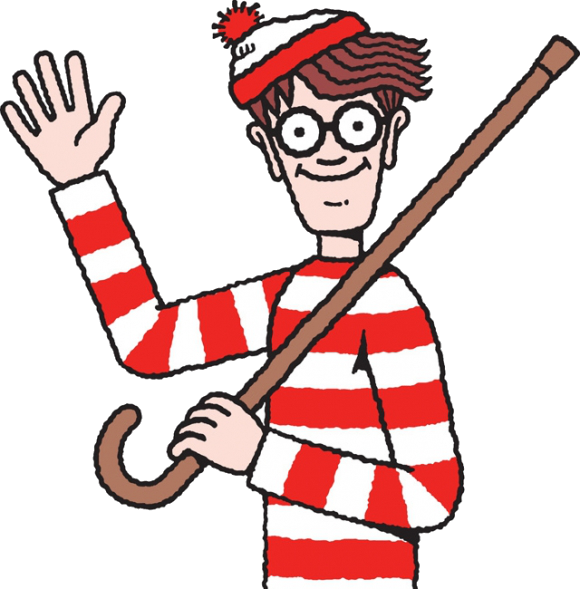
Source: subpng.com
It is a character from a series of children puzzle books. The books consist of detailed illustrations depicting some scenes with many people at a given location. And the goal is to find Waldo. Here is an example of a picture. Take a look at it to get a grasp of what’s in there.
Now, can you find Waldo in it?
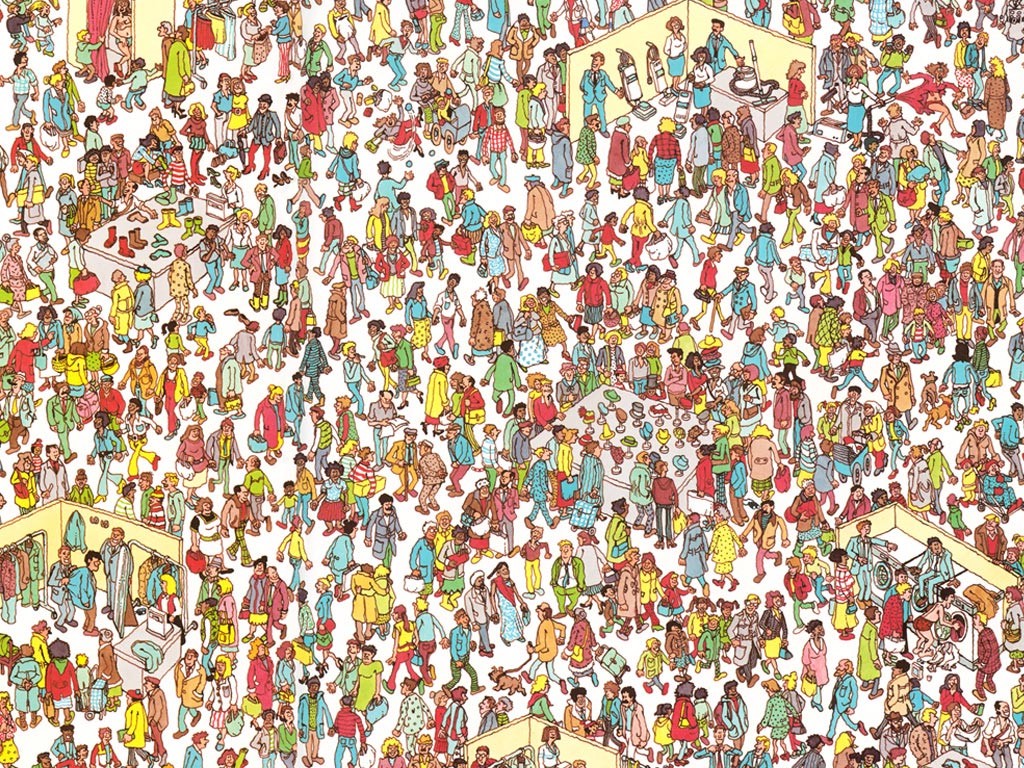
Source: pixy.org
I hope you enjoyed searching for Waldo, but I’d like to discuss the process you followed.
First of all, you can tell at a glance what the picture above is about. It is some sparsely arranged marketplace with lots of people walking around. It feels almost effortless and natural — you glance over the image, and you form an impression of what is there.
However, everything changes the moment you start looking for Waldo. Then you begin to analyze the image meticulously, inch-by-inch. Some people go character by character, examining and comparing the character they see with Waldo’s stored representation in their Working Memory. Others might look frantically across the image, trying to spot some resembling patterns in characters (e.g., red-and-white-striped shirt, bobble hat, etc.). Yet others might move horizontally or vertically, trying to find Waldo along their line of sight.
Regardless of the approach you choose, you will still have to look thoroughly through the whole image until you finally find Waldo (spoiler alert: he’s at one of the corners of the table located at the top-left of the image).
That’s our Goal-Directed attention in action. You had a goal — to find Waldo, and because you cannot process the entire image at once, you have to go piece-by-piece and analyze it in small chunks.
Stimulus-Driven Attention (Bottom-Up)
Imagine that while you are reading this article, you hear the sound of a breaking plate in the kitchen, which distracts you from reading. Or you are working on a report, and suddenly, the light starts to flash, thus distracting you from the job.
As the name suggests, this attention is driven by stimuli. As mentioned in How People Learn — Human Senses, there are five sensory channels capable of receiving information (stimuli) of the following types:
- Vision
- Hearing
- Touch
- Taste
- Smell
And there is an enormous difference between conscious and unconscious attention throughput:
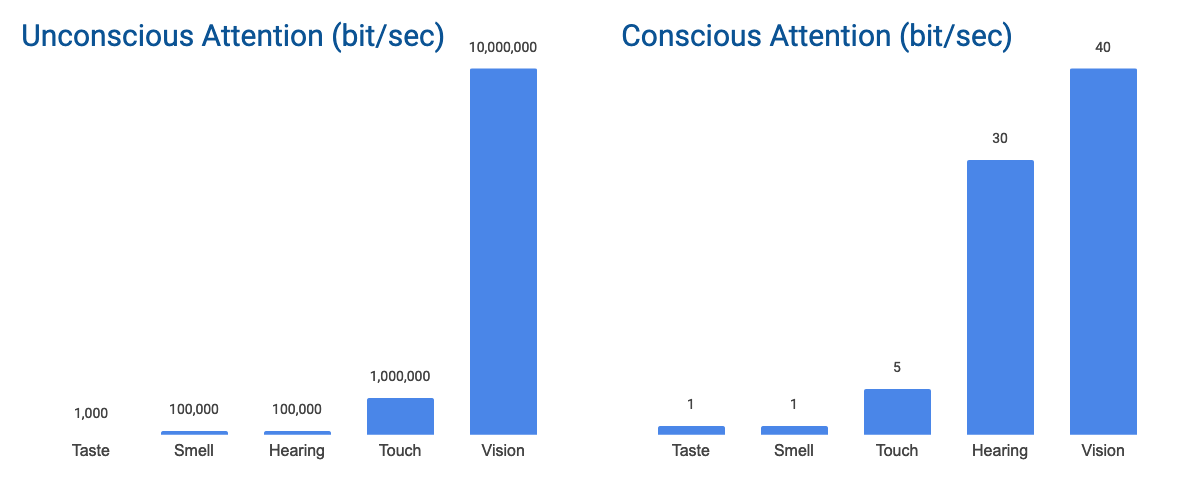
Although we can consciously process only a tiny bit of information we receive from the world around us, all that unconscious attention throughput is there for a reason. It participates in the unconscious monitoring of the world around us and promoting certain things to our attention, overriding our Goal-Directed attention, if necessary.
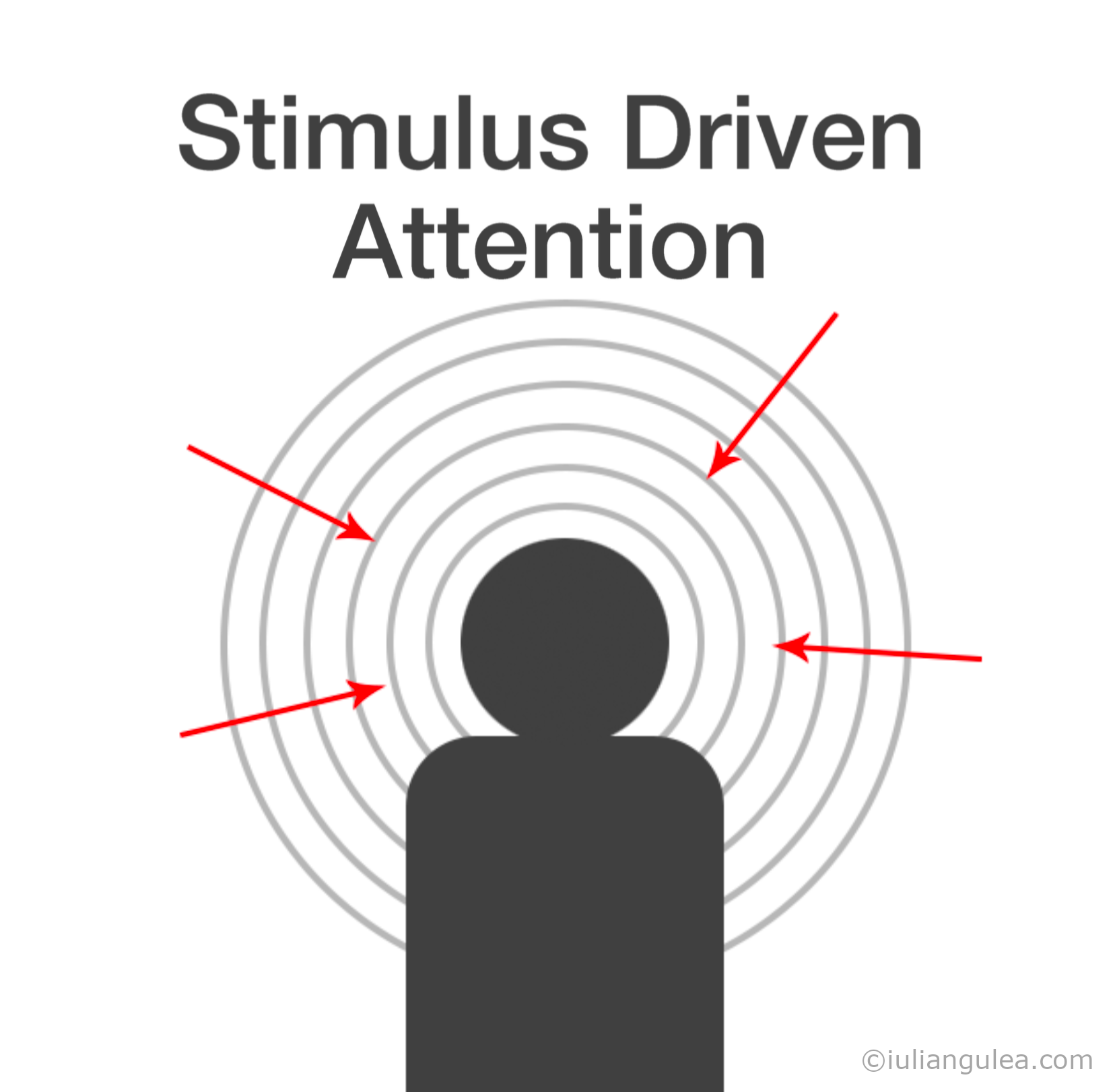
And it makes total sense from an evolutionary perspective. Imagine some of our very, very far ancestors, on a sunny day, found a bush with some delicious berries. They didn’t eat for a long time, and while savoring the juicy berries, totally immersed in this process, a branch cracks somewhere in the nearby bushes.
The first reaction is the fight or flight (or freeze) response that happens in the first milliseconds after hearing the cracking branch. And it happens automatically, without thinking like:
“Hmm… what could have caused that sound in the nearest bush? Could it be a saber-toothed tiger? Or maybe a bird? I think it would be more reasonable to get away from it as most probable it is some predator since my brother reported seeing a group of lions recently.”
Thus, some stimuli have the potential to override your Goad-Directed attention, even though you wouldn’t want that.
The Drivers Of Stimulus-Driven Attention
But what exactly can override your attention? According to the father of American psychology, William James:
In passive immediate sensorial attention, the stimulus is a sense-impression, either very intense, voluminous, or sudden — in which case it makes no difference what its nature may be, whether sight, sound, smell, blow, or inner pain — or else it is an instinctive stimulus, a perception which, by reason of its nature rather than its mere force, appeals to some one of our normal congenital impulses … these stimuli differ from one animal to another, and what most of them are in man: strange things, moving things, wild animals, bright things, pretty things, metallic things, blows, blood, etc.5
Therefore, the Stimulus-Driven attention is captured by either high-contrast changes in our environment (stillness to movement, loud to soft, silence to sound, dark to bright, etc.) or intensity stimulation (extreme sounds, sights, etc.) or by some certain impulses we find vital or appealing (dangerous things, beautiful things, shiny things, etc.), or somewhat “important” (e.g., one’s own name).
Similar conclusions were found in the Moray’s experiments:4
[…] Described the sort of reports that subjects could give about the rejected message. They could distinguish between speech, noise, and tones, recognize clicks and gross changes in pitch, such as the change from a man’s to a woman’s voice. But the verbal content of the message was blocked entirely, even to the extent of the subject being unable to say in what language the message was being spoken.
Therefore, more salient stimuli, like gross changes in pitch or different tones, are promoted to our conscious attention, but more weak or homogeneous ones, like different words spoken in the same voice, are not.
The Yin And Yang Of Attention
Although the two types of attention have different and sometimes opposite characteristics, it is the interaction between them that allows us to exhibit coherent behavior and navigate the social and physical worlds we live in.
Goal-Directed attention allows us to perform cognitive-related tasks when we need to concentrate and process information (e.g., communicating, writing reports, coding, operating machines, etc.).
Stimulus-Driven attention allows us to stay safe and navigate the vast world around us, as well as it aids us in a broad spectrum of tiny things in our daily lives (e.g., hearing the microwave bell sound, playing sports, driving a car, etc.)
5 Steps To Stay Less Distracted And Be More Productive
Knowing all the above about attention, let’s discuss some specific steps on how to be more productive when we need to perform some cognitive work.
1. Put your phone on silent mode and away from your sight.
I bet you can reproduce the sound from your messenger notification in your mind right now. All those sounds (including other notifications, calls, etc.) are nothing else than stimuli that have their primary goal to engage our Stimulus-Driven attention and distract you from the thing you are focused on. It is also essential to put the phone away, as having it in your area of sight will also grab your attention when the screen turns on upon receiving a notification (dark to light contract).
2. Close any browser tab that can distract you.
It feels almost a superpower that some people can see that (1) Facebook tab in your browser. The urge to check that notification is huge. Do not succumb to that desire. Do not even leave that tab open if you need to focus. Also, some sites have sound notifications as well.
3. Reduce the amount of sounds that can distract you.
A good pair of headphones can save you the trouble of constant distraction by your noisy teammate, neighbor, kids, that weird and loud laugh of your coworker, or literally any other disturbing sound.
4. Ask for some “productivity time.”
Sometimes you are in the flow, working in silence, with your headphones on, all the social network tabs closed and phone away, and then, especially in the pre-COVID-19 times, someone pats you on the shoulder and asks whether you want to grab a cup of coffee.
When I was working in the office, and there was some important task I needed to focus on, I kindly asked my colleagues not to disturb me in the next X hours. Even now, while working from home, you can do the same with your family.
5. Do not use different stimuli types that are not in sync.
Whenever you are watching a video on youtube, you are doing a great job receiving visual and auditory information at the same time. That’s because that information is synced and related.
However, things are not as smooth when the incoming stimuli are out of sync. The most prominent such example is whenever you are presented with some visual information (e.g., on slides), and at the same time, the presenter continues to speak on a different topic (or a poorly related one). In this case, you have the choice to either listen or look, but not both. Therefore, do not try to work and listen to some podcasts simultaneously — you will fail at both tasks.
But there is a more subtle yet common example: listening to music while doing intensive cognitive tasks. Now, don’t get me wrong — I love listening to music, even when I’m doing some light work. But when I need full focus, I avoid music with lyrics. And that’s because the song refrain or “that specific verse” will definitely “call” you to listen and enjoy it, thus distracting me from what I need to do. There was even performed a study that confirmed this.6 In such cases, instrumental music works better. Even better — listen to some white noise.
Concluding Thoughts
Our attention is a wonderful mechanism that evolved throughout time to allow us to stay alive and focus on discovering the world around us and thinking about things (and abstract concepts), which eventually led us to where we are today.
Attention has a dual nature: the Goal-Directed attention allows us voluntarily focus on things that are important to us, while the Stimulus-Driven attention scans our surroundings for any potential threat, and it reacts to contrasting things (moving to stillness, light to dark, loud to silence, etc.), as well as “important,” pretty, and shiny things.
Since our productivity directly relies on our ability to deploy our Goal-Directed attention and focus on specific things, understanding how attention works is crucial to improving your productivity.
A general rule would be not to tempt your Stimulus-Driven attention, as it will distract you if you give it the opportunity. Therefore, keep distractions away and stay focused!
If you liked this article, consider subscribing below and following me on twitter (@iuliangulea).Asplund, C. L., Todd, J. J., Snyder, A. P., & Marois, R. (2010). A central role for the lateral prefrontal cortex in goal-directed and stimulus-driven attention. Nature Neuroscience, 13(4), 507–512. doi:10.1038/nn.2509 ↩︎
Originally, I read about this analogy in a series of posts on attention in 2015. Unfortunately, I couldn’t find any reference to those posts today or the author who initially came up with this comparison. ↩︎
Corbetta, M., & Shulman, G. L. (2002). Control of goal-directed and stimulus-driven attention in the brain. Nature Reviews Neuroscience, 3(3), 201–215. doi:10.1038/nrn755 ↩︎
Moray, N. (1959). Attention in Dichotic Listening: Affective Cues and the Influence of Instructions. Quarterly Journal of Experimental Psychology, 11(1), 56–60. doi:10.1080/17470215908416289 ↩︎
James, W. Principles of Psychology Vol. 1 (Henry-Holt & Co., New York, 1890). ↩︎
Background music: Effects on attention performance Yi-Nuo Shih, Rong-Hwa Huang, and Hsin-Yu Chiang. doi:10.3233/WOR-2012-1410 ↩︎